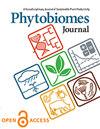NemaTaxa: A new taxonomic database for analysis of nematode community data
IF 3.3
3区 生物学
Q2 MICROBIOLOGY
引用次数: 0
Abstract
High throughput amplicon sequencing of nematode communities has the potential to increase our understanding of nematode community ecology. A current constraint to the widespread implementation of amplicon sequencing is the lack of sequence databases with consistent taxonomic naming schemes. Focusing on 18S sequence data, we developed NemaTaxa, a manually curated database that can be used with QIIME and mothur analysis platforms. Nematode 18S sequence data was downloaded from NCBI from which both Nematoda universal primers NF1 and 18Sr2b aligned. Taxonomic strings were trimmed to include only classical Linnaean lineages to genera within Nematoda; missing taxonomic data were completed manually. NemaTaxa was compared with other available databases, specifically PR2 and Silva v132, available for mothur using data collected from Oregon, Idaho, and Washington potato cropping systems. In general, NemaTaxa performed similar to PR2 in the number of contigs assigned to Nematoda and estimates of diversity. NemaTaxa resolves classification at the genus, family and order levels while PR2 always has a portion of sequences assigned at the class level due to incomplete taxonomic strings. The Silva v132 database available in mothur is of limited use because of the greatly reduced number of nematode sequences available in the database, making classification only possible to the level of order. NemaTaxa offers an “off the shelf” database that can be used by nonexperts in nematology wanting to explore nematode community ecology, and therefore, will allow for inclusion of nematodes in soil ecology studies that employ amplicon sequencing for other organisms such as fungi and bacteria.NemaTaxa:一个用于分析线虫群落数据的新分类数据库
线虫群落的高通量扩增子测序有可能增加我们对线虫群落生态学的理解。目前对扩增子测序广泛实施的限制是缺乏具有一致分类命名方案的序列数据库。专注于18S序列数据,我们开发了NemaTaxa,这是一个手动策划的数据库,可以与QIME和方法分析平台一起使用。线虫18S序列数据从NCBI下载,线虫通用引物NF1和18Sr2b从NCBI比对。分类字符串被修剪为只包括林奈线虫目属的经典谱系;缺失的分类数据是手动完成的。NemaTaxa与其他可用的数据库,特别是PR2和Silva v132进行了比较,这些数据库可使用从俄勒冈州、爱达荷州和华盛顿马铃薯种植系统收集的数据进行封存。一般来说,NemaTaxa在分配给线虫目的重叠群数量和多样性估计方面与PR2表现相似。NemaTaxa在属、科和目级别上进行分类,而PR2由于分类字符串不完整,总是有一部分序列在类级别上分配。目前可用的Silva v132数据库用途有限,因为数据库中可用的线虫序列数量大大减少,因此只能按顺序进行分类。NemaTaxa提供了一个“现成”的数据库,线虫学的非专家可以使用该数据库来探索线虫群落生态学,因此,将允许将线虫纳入土壤生态学研究,该研究对真菌和细菌等其他生物采用扩增子测序。
本文章由计算机程序翻译,如有差异,请以英文原文为准。
求助全文
约1分钟内获得全文
求助全文

 求助内容:
求助内容: 应助结果提醒方式:
应助结果提醒方式:


